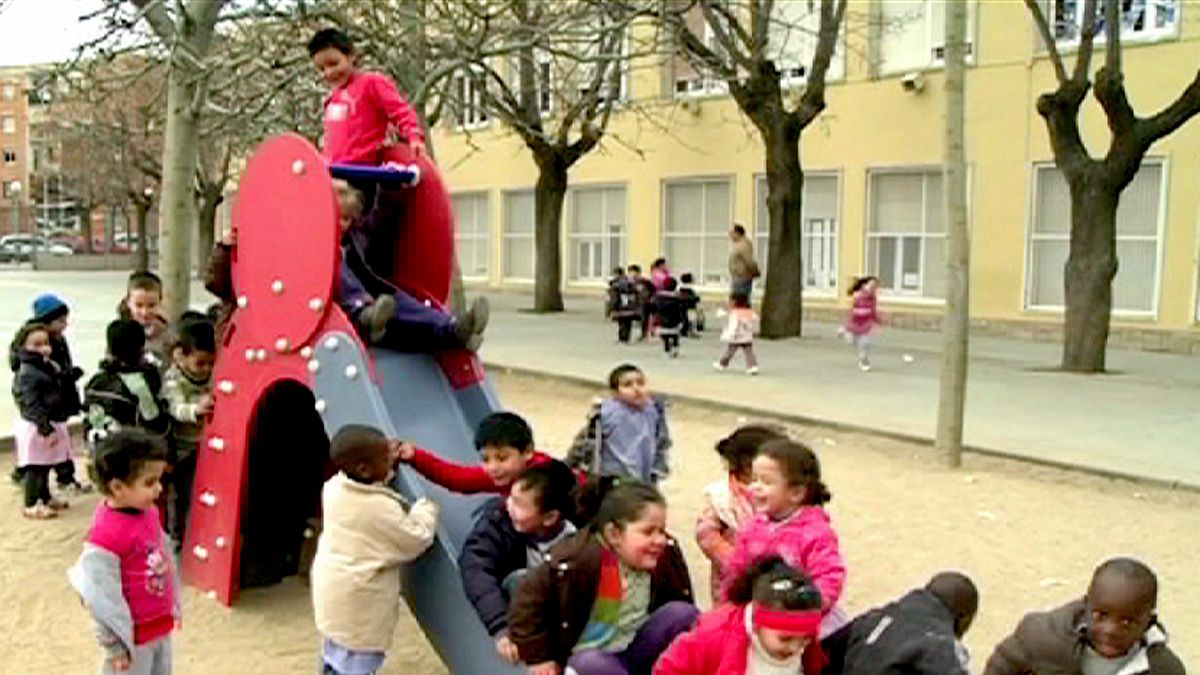Children from migrant families often face the twin tasks of learning a whole new language and integrating into an unfamiliar culture before they can even start getting an education.
Thailand: Hope for Burmese children
There are an estimated two million Burmese migrants in Thailand but only a quarter of them are officially registered. According to the International Organisation for Migration, 200,000 of them are children. They come to Thailand to escape political persecution or to find better paid work.
Since 2005 The Foundation for Education and Development has been running an education project for Burmese children in Thailand. It costs seven dollars a month to send a child to this school, and the fees also cover transport and lunch.
As well as Thai, the children learn English, maths, science and social sciences. In 2006, the Thai government allowed around 100 young Burmese children to enrol at state schools but it was not easy.
Who knows how long these children will stay in Thailand? It could be weeks, months or even years. But with programmes like these, at least some of them will get an education.
For more information see
Spain: A model for integration
Over the last decade there has been a huge influx of people into Spain – and more than 60 percent of the pupils in a school we visited near Barcelona are immigrants. The school not only aims to educate their pupils but to reinforce social cohesion and cultural respect.
One of the innovations is a “host classroom” where newcomers get intensive language training and are helped to integrate into the school.
Teacher Yolanda Soriano said: “The activities are basically oral, and very playful, in order to make new children feel more comfortable. We emulate the real world, starting from basic vocabulary: food, animals and clothes, and we set up play shops where buyers and sellers have to make conversation and trade products and money.”
The teachers found that in many cases, immigrant parents are more involved in their children’s education than local parents.
The school does not require residence permits in order to enrol children, and enrolments are accepted throughout the school year. And teachers help parents with bureaucracy even if it is not connected to the school.
Many schools in Spain still covertly avoid enrolments by migrant pupils by using selection processes. But only when an entire society accepts newcomers, will immigration no longer be a problem.
For more information see
Kyrgyzstan: Mobile workforce
In Kyrgyzstan, wages are very low and living conditions often very harsh. The industrial sector collapsed at the end of the Soviet era and since the 1990s, thousands of people have emigrated every year to find work abroad.
At one school in Osh, they run classes for people who plan to emigrate. The idea is to teach them skills they can use abroad to find work. Jazgul hopes to earn up to 10 times more than a teacher in Kyrgyzstan by working abroad.
Out of the 900 students at the school, 400 of them are preparing to leave the country. They are doing courses in mechanics, welding and masonry, paid for by the government.
Kazakhstan and Russia are the most popular destinations. The advantages of having so many people emigrate from the country is that these people contribute to Kyrgyzstan’s economy by sending money to their families back home.
Brain drain or mobile workforce? Only time will tell. It is estimated that around 10 percent of the population left the country last year.
